
Blizzard Entertainment's first real-time strategy game for smartphones, WarCraft Arclight Rumble, is slated to launch on iOS and Android later this year, with a tech beta going live sooner in various regions. Ahead of that launch, we were invited to test the game's current version for a couple of days, and we can confirm that Blizzard is still pretty good at designing games for phones. (Even if they've brought at least one related gaffe upon themselves.)
In Arclight Rumble's case, however, a certain chicken-and-egg question comes up: When comparing this game to the wildly popular Clash Royale, exactly who is ripping off whom?
 CGI intro emphasizes that you're tossing plastic figurines onto a table, which then come to life and do battle on your behalf. Gotta... WarCraft 'em all?Blizzard
CGI intro emphasizes that you're tossing plastic figurines onto a table, which then come to life and do battle on your behalf. Gotta... WarCraft 'em all?Blizzard Just another day of plastic mini battling at the pub.Blizzard
Just another day of plastic mini battling at the pub.Blizzard
Both games overlap, as Blizzard's new smartphone game adopts more than a few of Supercell's well-trodden, touchscreen-friendly conventions. Yet Supercell's game arguably borrows a lot from the original WarCraft series on PC—not just in its adherence to RTS traditions but also its medieval, primary-color aesthetic.
However you parse it, Arclight Rumble appears to add just enough depth to the smartphone RTS genre to stand out, though anyone new to this gaming space should brace themselves for a whole new universe of microtransactions. While not as aggressive as some of the smartphone world's worst offenders, Arclight Rumble's approach will still be a tough sell to anyone who remembers buying WarCraft RTS games outright.
Familiar fare gets bigger, more strategic
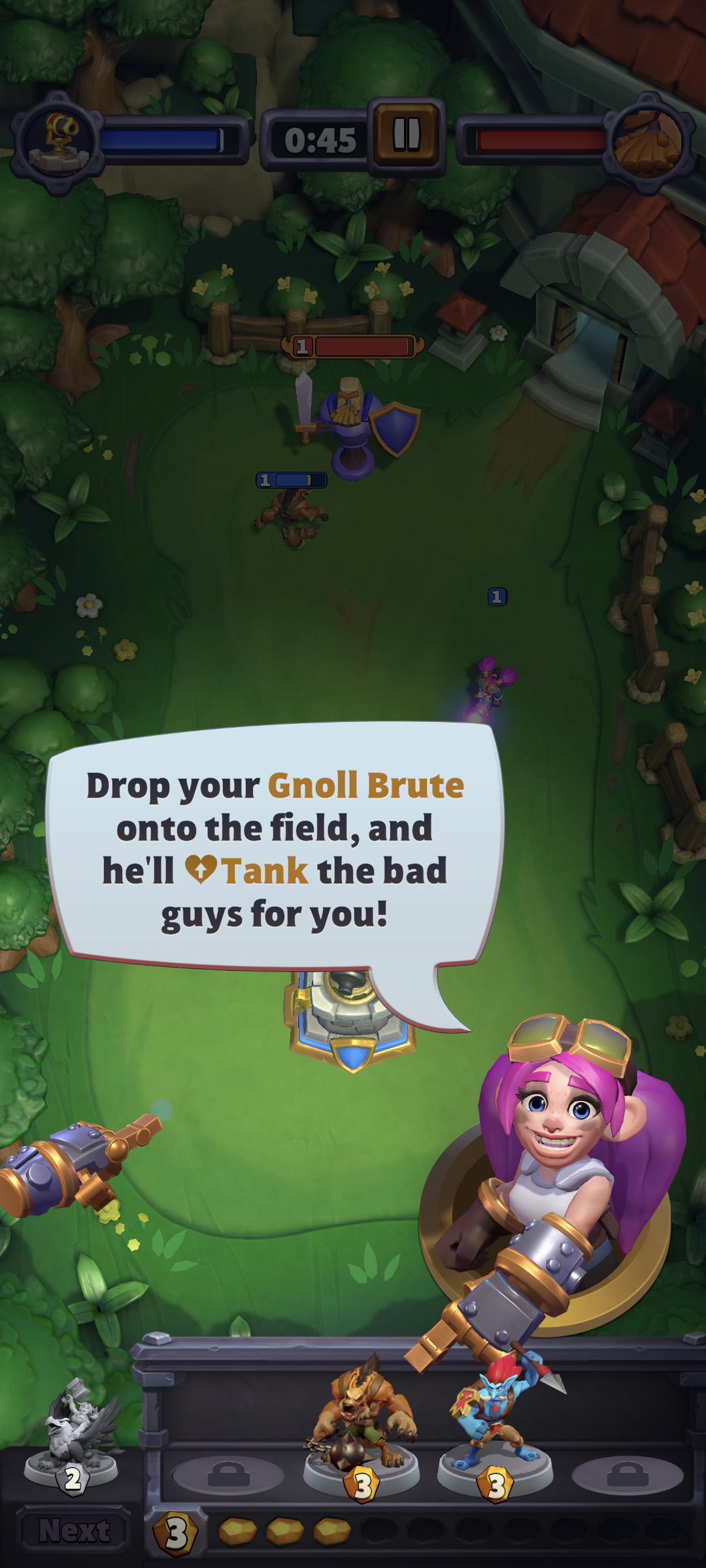 The bottom of this screen shows the minis available during combat. You'll have four of your deck's maximum of seven units available at any time (six of your choice, plus a dirt-cheap miner), and you can drop them at any control points that you own.Blizzard
The bottom of this screen shows the minis available during combat. You'll have four of your deck's maximum of seven units available at any time (six of your choice, plus a dirt-cheap miner), and you can drop them at any control points that you own.Blizzard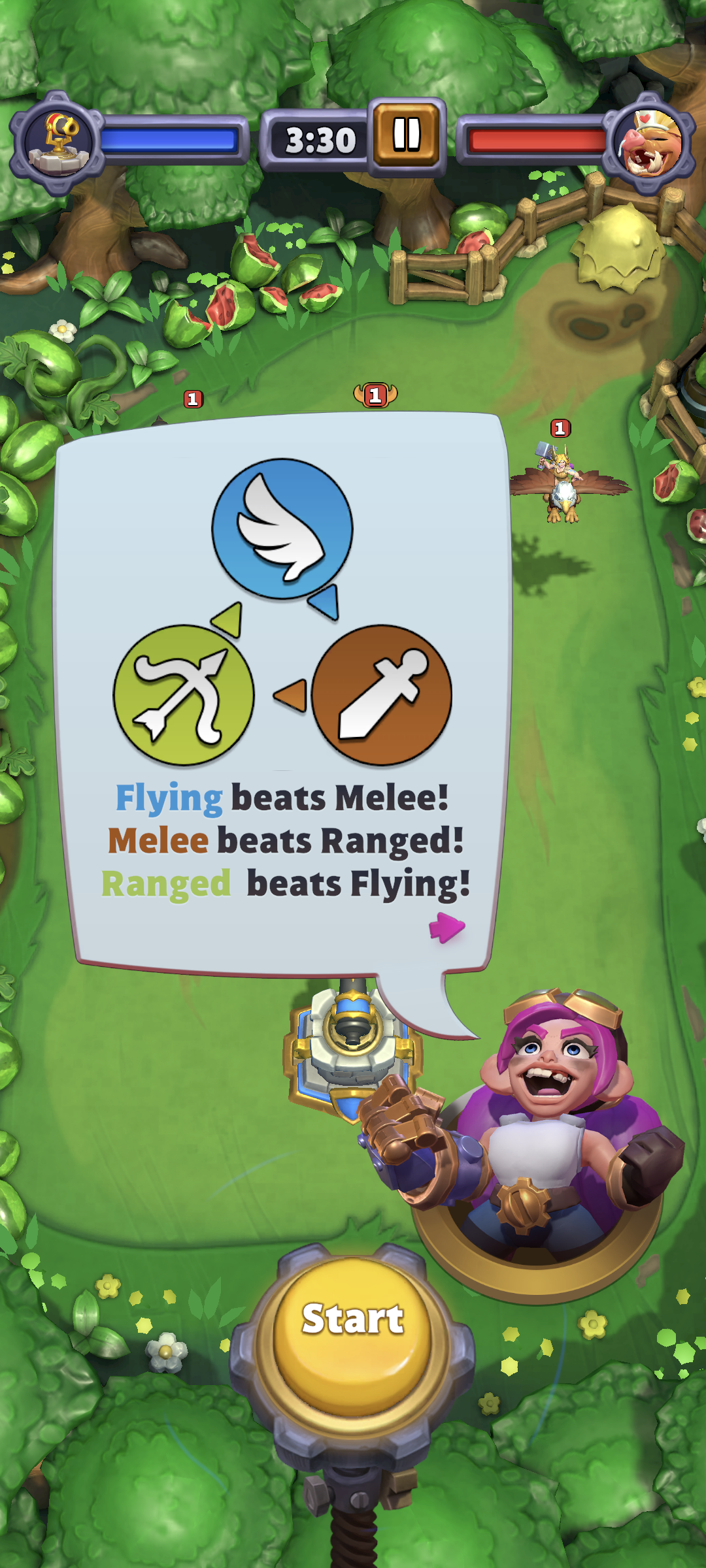 The game's new squeaky-voiced host introduces basic RTS mechanics in slightly cringe-inducing fashion, but she's out of players' hair after only a few minutes.Blizzard
The game's new squeaky-voiced host introduces basic RTS mechanics in slightly cringe-inducing fashion, but she's out of players' hair after only a few minutes.Blizzard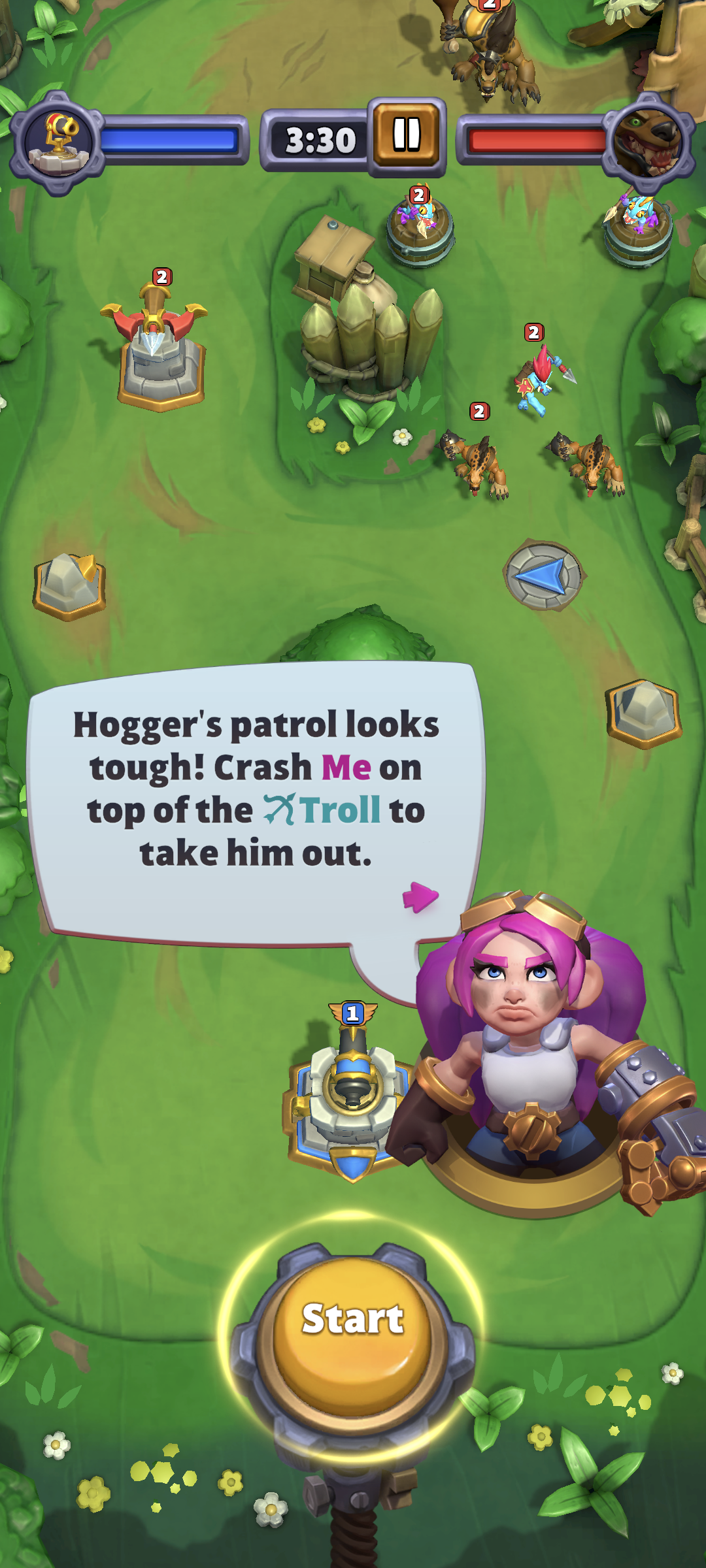 Some units can be dropped outside of your control points wherever you please on the battlefield, and these hugely impact Arclight Rumble's strategic depth compared to smartphone games like Clash Royale.
Some units can be dropped outside of your control points wherever you please on the battlefield, and these hugely impact Arclight Rumble's strategic depth compared to smartphone games like Clash Royale.
If you've played Clash Royale, you know the drill. The game defaults to one-on-one faceoffs without any fog of war, and the object is to send troops from your side of the battlefield to your opponent's to destroy an enemy base while protecting your own. Troops appear as cards, randomly shuffled into players' hands from a deck, and players spend a battle-specific currency to turn those cards into active troops (or spells that can be cast by tapping on the screen). More powerful units cost more currency, and each unit type has strengths and weaknesses over others, so savvy players will generate and direct troops with that in mind in order to succeed. (Melee beats ranged, ranged beats aerial, and aerial beats melee.)
That entire paragraph could apply to either game mentioned in this article, so what's different in Arclight Rumble?
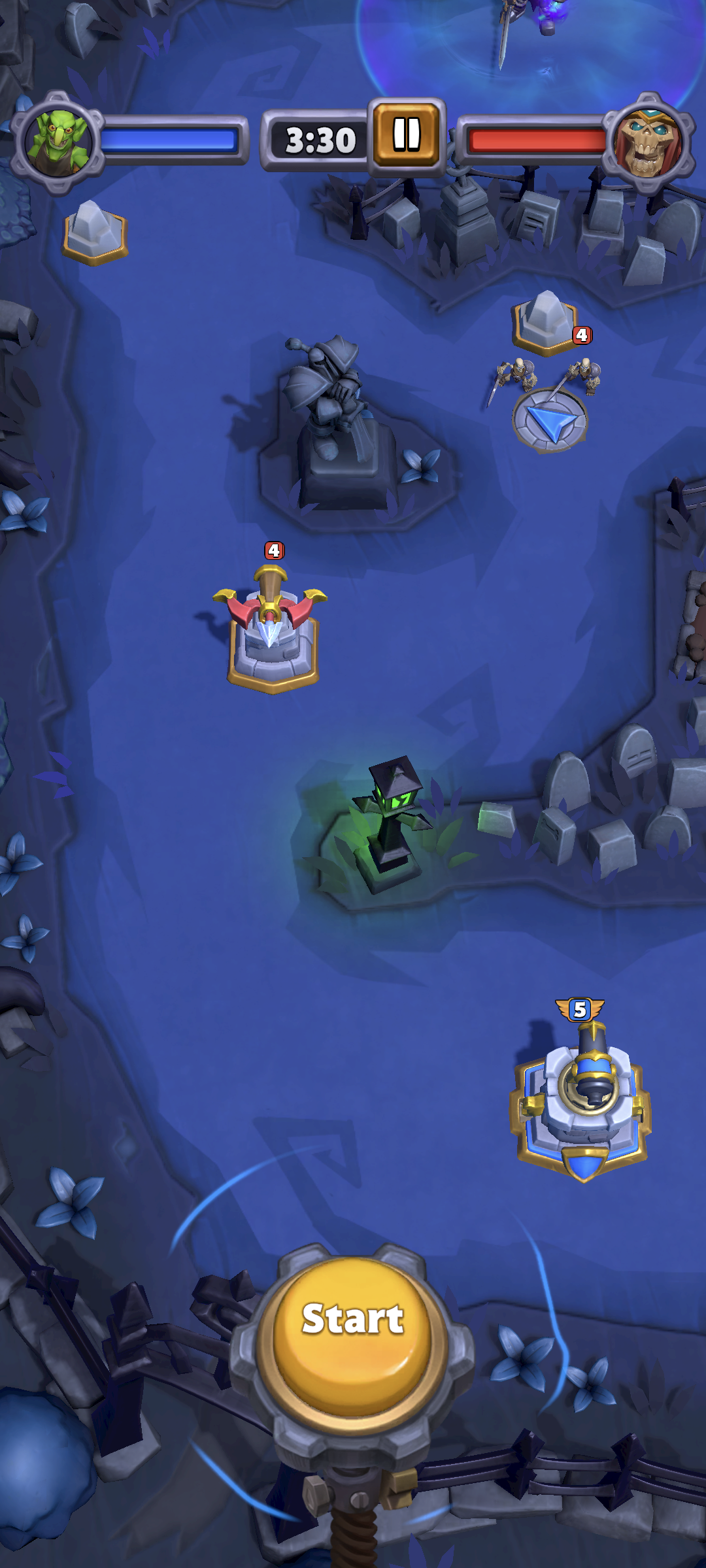 One campaign battlefield seen from the bottom-left. Click through to see how paths in an average Arclight Royale arena look and function. In this map, the bottom blue turret is our base, and the red ballista is an enemy's control point.Blizzard
One campaign battlefield seen from the bottom-left. Click through to see how paths in an average Arclight Royale arena look and function. In this map, the bottom blue turret is our base, and the red ballista is an enemy's control point.Blizzard The same battlefield seen from the bottom-right. The little rock formation on the right will generate gold every 20 seconds or so, which either faction can mine with a melee unit.
The same battlefield seen from the bottom-right. The little rock formation on the right will generate gold every 20 seconds or so, which either faction can mine with a melee unit.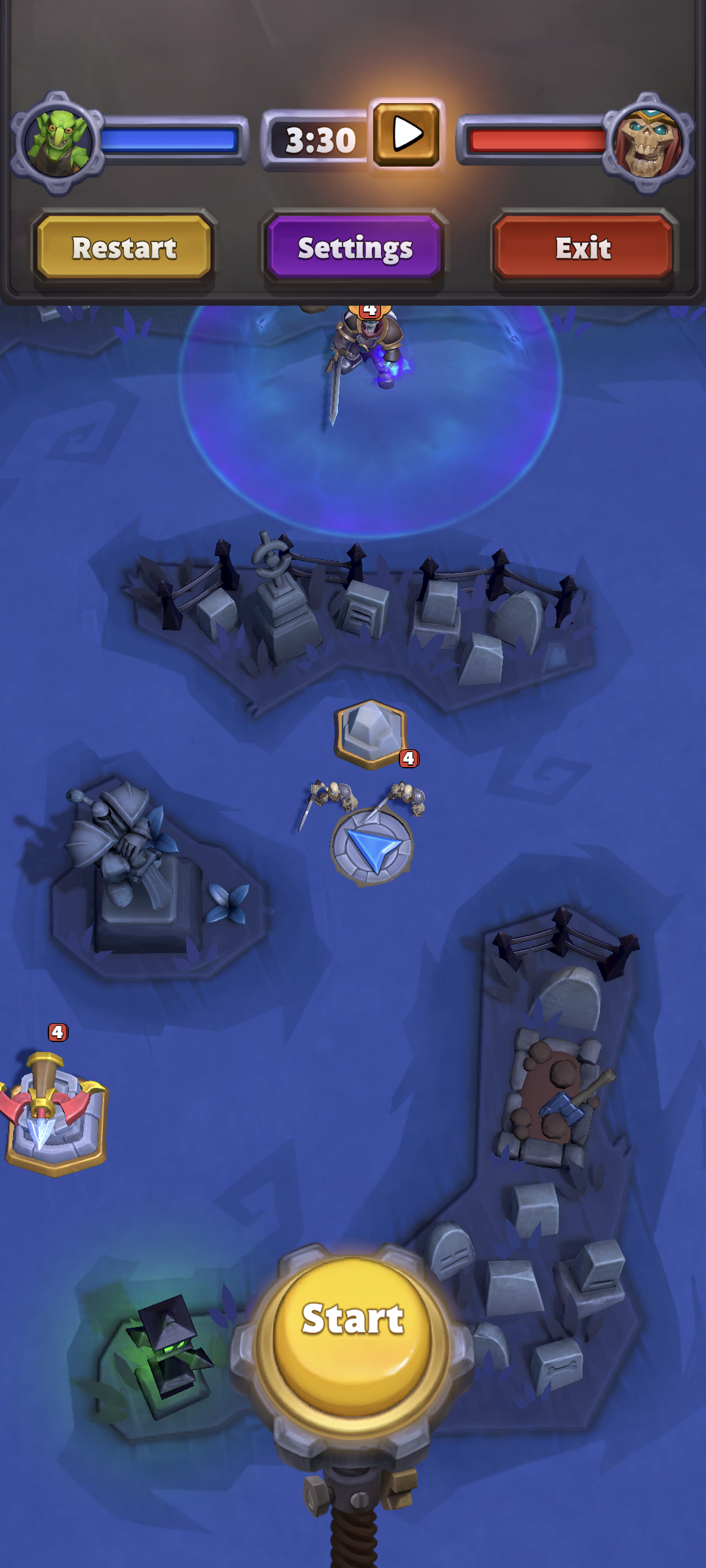 The same battlefield again, now seen from the top-middle. Instead of a base, campaign enemies have a higher-leveled unique warrior to fight. Kill it, and you win the campaign level.
The same battlefield again, now seen from the top-middle. Instead of a base, campaign enemies have a higher-leveled unique warrior to fight. Kill it, and you win the campaign level.
Blizzard's game better splits the difference between a smartphone card-battler and a PC RTS. Battlefields in Arclight Rumble are bigger, and they typically don't fit on a single smartphone screen, thus requiring finger swipes to move your viewpoint between your base (bottom of the screen) and your foe's (top of the screen). These arenas are vertically oriented, so it's more of an up-to-down swipe to glance around, not left-to-right, which feels good in practice.
Unlike a classic RTS, players don't rapidly click a mouse to issue commands, but troop management is also not as wholly simplified here as in Clash Royale. Arclight Rumble players can tap an arrow on the ground to tell troops which way to advance when a path branches, and they otherwise automatically march forward and target foes along the way.
Blizzard adds the RTS-like convention of putting control points and gold mines onto its larger battlefields. If your troops can successfully wear down a control point, it becomes yours, and some of them come with auto-firing catapults. Once you take over one of these, you can opt to spawn troops that much closer to your foe's base. And gold mines can be smacked by any of your melee troops, including a low-cost miner character who comes as a default in your deck, no matter what other cards you put into it. You need gold to spawn new troops, but the miner, who costs only one gold, can quickly grab two gold pieces from mines that regularly regenerate near your base. (There's also the strategic option to spend your allotment of gold to move troops toward enemies' gold mines—especially for special troops that can be freely spawned outside of your control points.)
 Leaders don't go into battle; instead, they offer perks based on your army. You'll want to unlock a couple and change them out based on the demands of the campaign.Blizzard
Leaders don't go into battle; instead, they offer perks based on your army. You'll want to unlock a couple and change them out based on the demands of the campaign.Blizzard Use your finger to zoom into and spin each of the characters, or scroll through the info box to learn more about unique abilities.
Use your finger to zoom into and spin each of the characters, or scroll through the info box to learn more about unique abilities.
Increasing the game's average map size and dotting each with control points is an interesting tweak to the fits-on-one-screen combat of Clash Royale, and mid-arena control strategy makes this game feel deeper than some of its peers. But such an expansion in scope exposes how simple these smartphone strategy games can feel once play hits a higher level. In particular, there's no way to contend with Blizzard's auto-targeting failures. As of press time, I've seen my melee troops turn around and react to enemies that have passed them by when two battling lanes criss-cross. This happens even when I've devoted my limited gold economy to a massive rush meant to bombard my foe's base, my own defenses be damned. There's no troop tag for "kiting" in this game, which might have indicated that enemies could lure my melee forces away from my objective.
More dollars, less sense
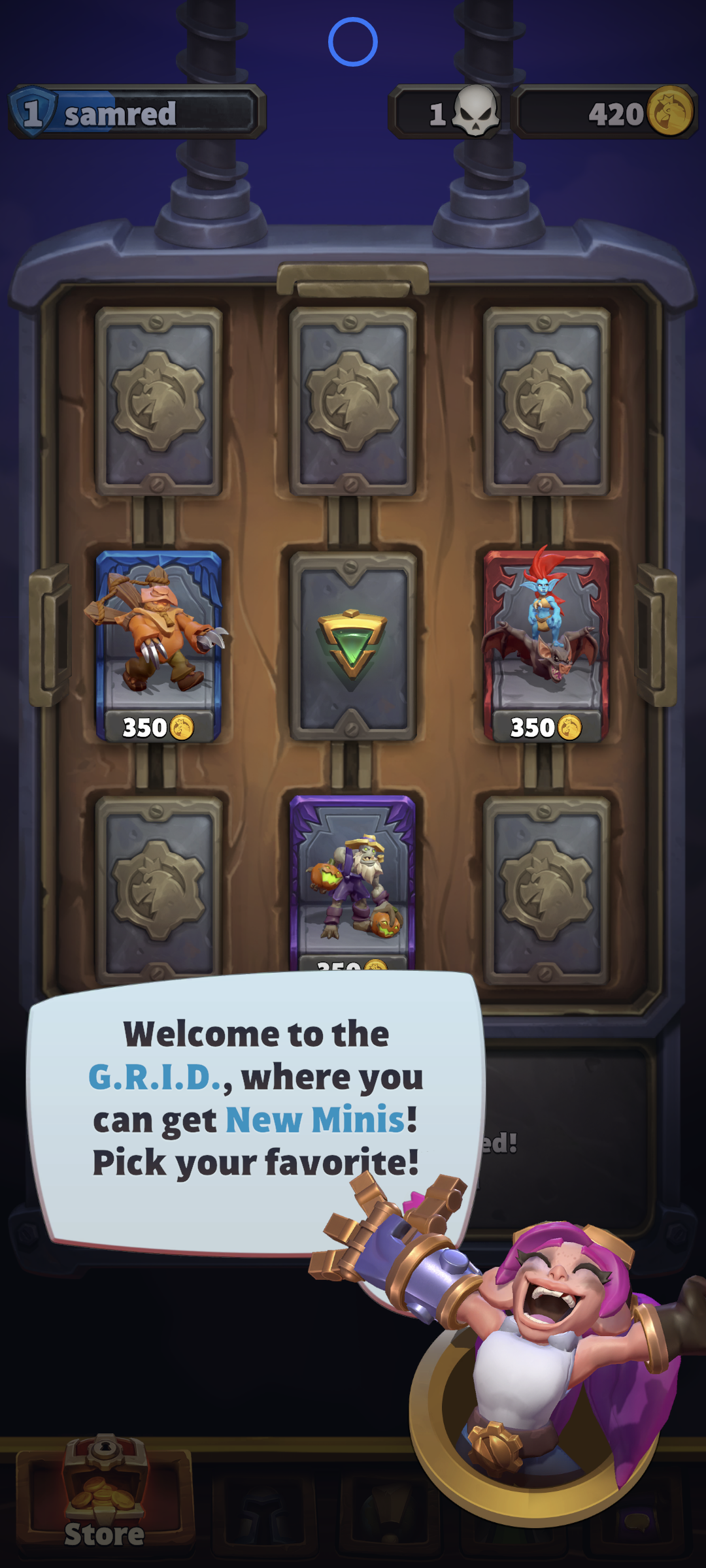 You'll unlock 90 coins per campaign level, and starting characters cost 350 coins. That math isn't terrible, but based on how the campaign currently works, it could be better for thrifty players.Blizzard
You'll unlock 90 coins per campaign level, and starting characters cost 350 coins. That math isn't terrible, but based on how the campaign currently works, it could be better for thrifty players.Blizzard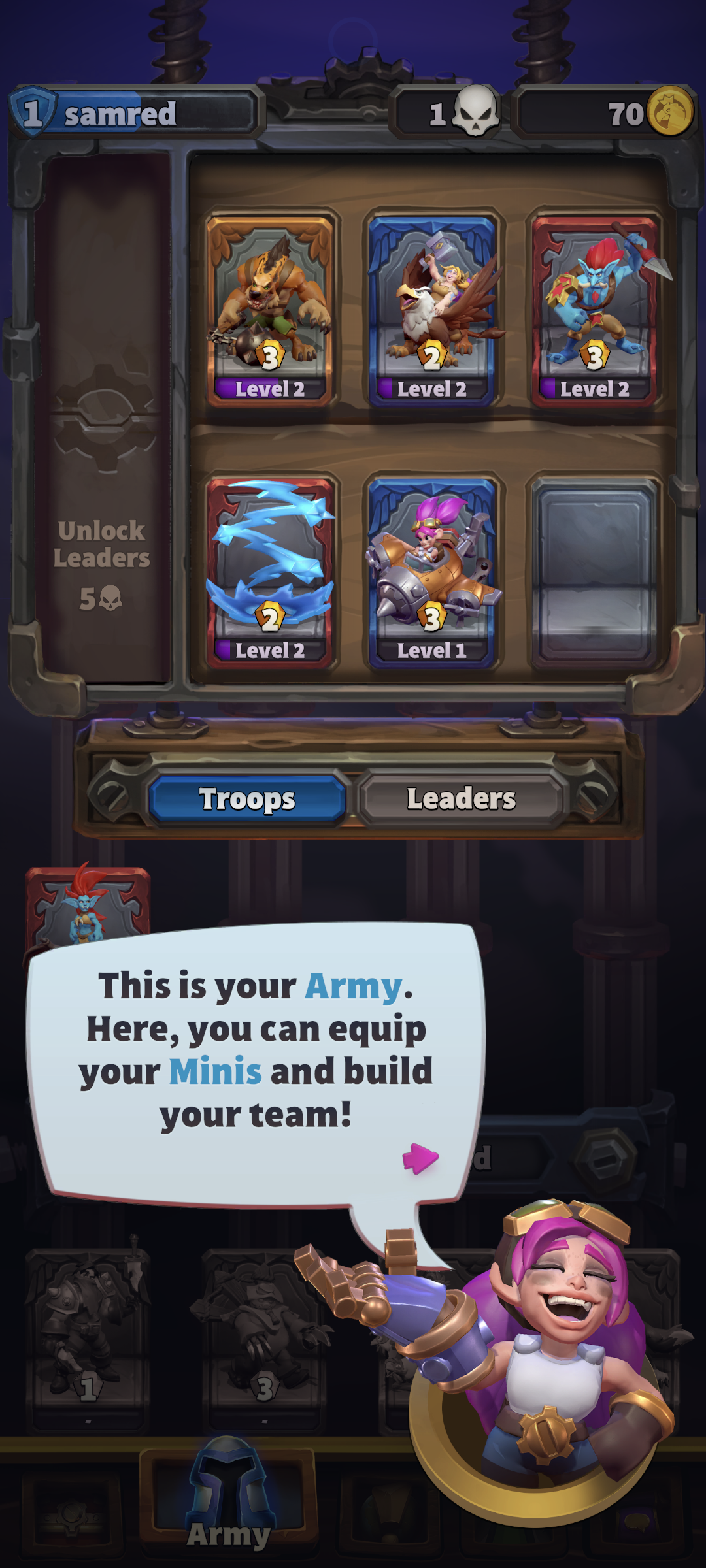 Up to six troops can be in your deck in a battle.
Up to six troops can be in your deck in a battle.
Otherwise, Arclight Rumble boils down to troop management—which, of course, is how free-to-play strategy games make money. Blizzard is particularly keen on making sure you connect the dots between accumulating new characters and feeling like you've amassed a selection of shiny new figurines, as its opening cinematic shows a Hearthstone-like pub where patrons put WarCraft-styled minis onto a table and then watch them come alive and do battle.
To its credit, the game's lengthy solo campaign doles out two crucial kinds of freebies: new troops and experience points to increase your troops' ability points. But I'm not sure it does enough of this by default. At the game's outset, you can get enough in-game "coins" to unlock one new troop after every four campaign battles, plus a pittance of free "daily log-in" bonus coins. I didn't get far enough in the campaign to see whether the math becomes more punitive for non-paying players as the game advances (which, sadly, is a common practice in the smartphone marketplace). But I did see that this "one new troop every four campaign levels" math wasn't enough to let new players sufficiently experiment and swap out troops since they can only take six into battle at a time.
 A peek at the real-world money store. This is subject to change, since the game isn't formally launching yet, but Blizzard will accept real-world money through the beta period on Android—with all purchases turned into credit for the final game once that launches. (I suggest not spending money since some of the money spent in this game applies to things outside the "coin" economy.)Blizzard
A peek at the real-world money store. This is subject to change, since the game isn't formally launching yet, but Blizzard will accept real-world money through the beta period on Android—with all purchases turned into credit for the final game once that launches. (I suggest not spending money since some of the money spent in this game applies to things outside the "coin" economy.)Blizzard One of these super-powered troops can be yours for $1.99.
One of these super-powered troops can be yours for $1.99.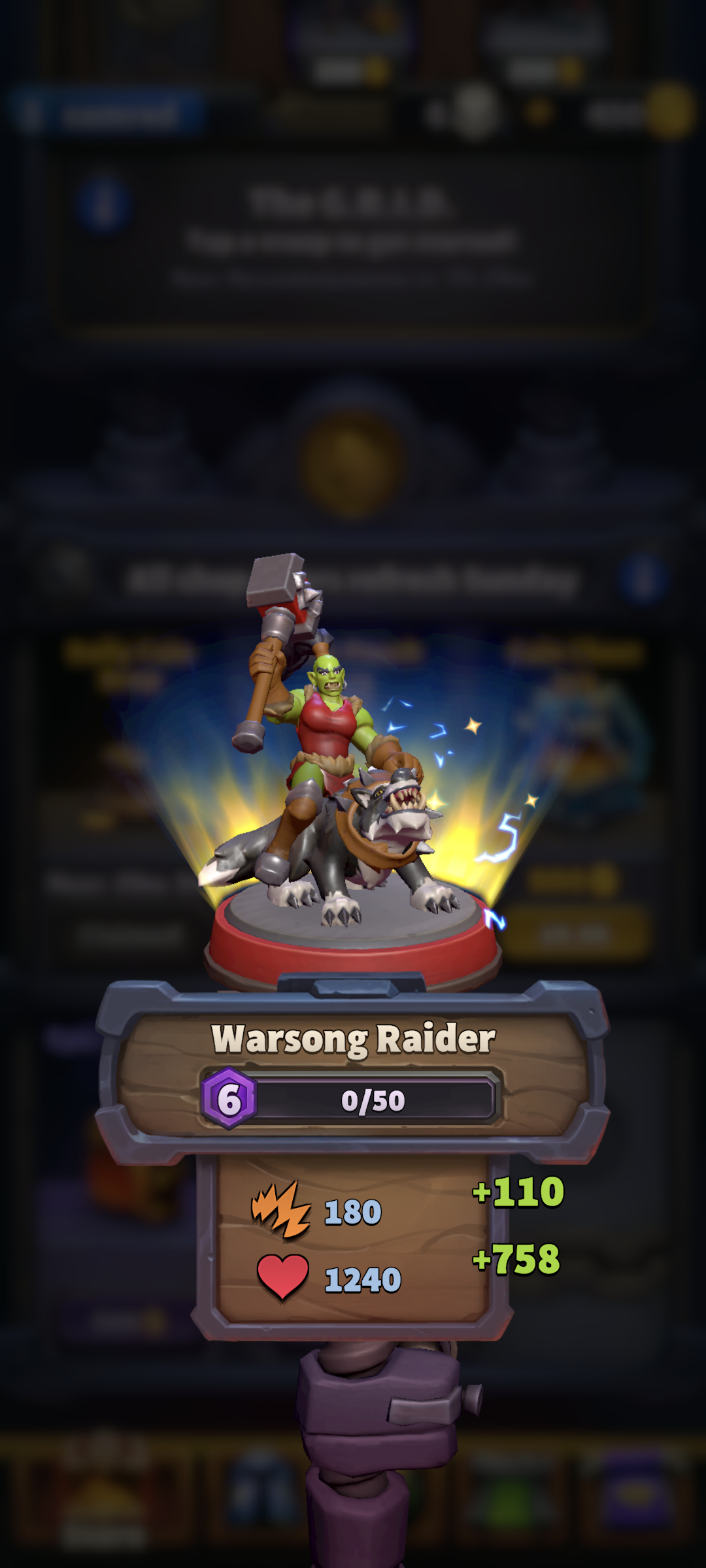 Yes, I paid to win.Blizzard
Yes, I paid to win.Blizzard
Weirdly, I had to beat 11 campaign levels before the game offered me a $19.99 purchase of the "Arclight Booster" DLC, which doubles coin gain and adds a 20 percent boost to experience-point gain for life. Why couldn't I buy that upfront and get my first five hours of play boosted as well? The shop gets worse from there, especially once the campaign ratchets up the challenge after about five levels. It's around this time that the shop nudges players with the option to spend $1.99 outright to unlock one of three super-powered troops.
At this point in my testing, I had only unlocked the game's free starter set of troops, along with a single troop of my choice using my freely acquired coins, but my setup was still lacking strategic depth, not to mention the fact that players must level up their troops in combat for more attack power, health, and other stats. Eventually, the game opens up a "quests" mode that lets players grind for XP (XP is also given out when players fail and retry any campaign battle), but I knew I had limited time to see the game's content and write up these impressions. I saw a "siege" troop that ran faster than my other melee options, so I paid $1.99 of my own money. The level that I'd previously failed became a cakewalk. I paid to win.
A content suggestion for Blizzard—because I want to play this game!
Instead of letting players determine their strategic path by building from a full tech tree of options and then reacting on the fly mid-battle once those either succeed or fail, Arclight Rumble currently locks players into whatever troops and spells they select before a battle begins. This dumbing-down of RTS mechanics is arguably the right choice for a small smartphone screen, but it chokes out the WarCraft-iness that the game's name and aesthetic evoke.
I had to beat the campaign's 12th level to unlock the player-versus-player (PVP) mode, where I learned that Blizzard, like Supercell, removes all XP-related perks from troops on both sides of a real-life online match. This felt more fun than the moments in the campaign where I felt stymied by a spike in difficulty, seemingly driven by the computer having higher-XP troops. (To the game's credit, some difficulty walls in the campaign were surmountable by remixing my available troops, including mostly free ones.)
But the money I spent on that fast-running siege troop meant I had a strategic edge on anyone I battled in PVP who opted not to spend money thus far, and the same will arguably go for anyone who brings a more fully fledged selection of cards, obtained through in-game grinding and with real-world money, to battles against those who don't. I think Blizzard could fix this issue with a single tweak: Allow players to swap a single troop mid-battle, much like how FIFA rules allow three substitutions per match. Did your opponent opt for an all-aerial assault? Use a mulligan to react on the fly.
I bring up this idea because I have otherwise enjoyed the general flow, presentation, and accessibility of the game (occasionally dumb AI notwithstanding). I could see myself committing more to what's here if Blizzard delivers some tweaks between now and the game's full release. WarCraft devotees may wince at the game's cheerful, cartoony introduction, starring a squeaky-voiced, purple-haired child soldier, but the whole affair settles into tolerably Hearthstone-esque cartoon-fantasy stuff before long—all marked by high production values and solid smartphone performance. This doesn't feel like a cheap smartphone cash-in (or the ongoing tire fire that is WarCraft III Reforged).As far as battle flow and mechanics are concerned, I'm a few years out from the patience and mastery needed to play full-blown PC RTS games. I'm more interested in the idea of a Clash Royale clone that feels like a PC sim of old, so part of me wants the talented artists and devs behind Arclight Rumble to succeed so that I can expect an ecosystem of fun for a few years—and even enjoy it with friends (helped in part by the game's tidy, built-in "guild" system). But $19.99 for a lifetime XP boost is too much in a world where I can buy amazing, self-contained games for as little as $5, and other pay-to-win touches (which Blizzard may very well tweak before the game exits beta) need serious softening if Blizzard expects a potential new audience to feel like their time and money are respected.
https://ift.tt/aN64xcX
Technology
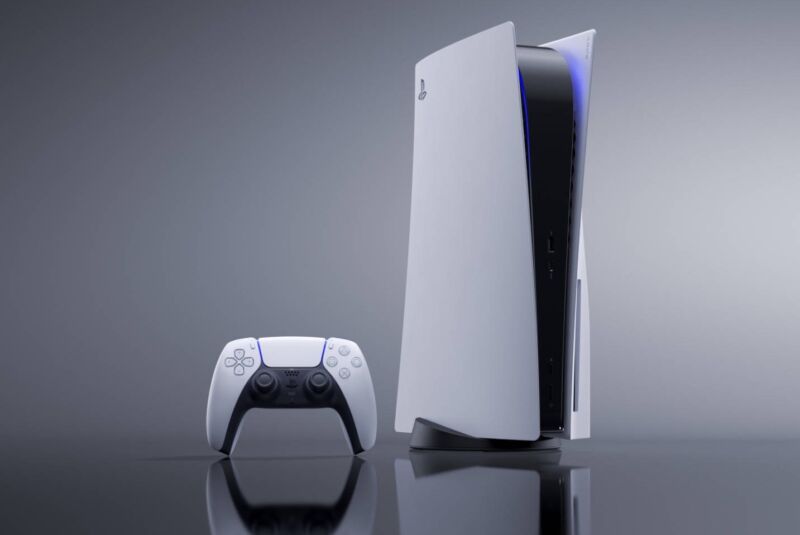
No comments:
Post a Comment